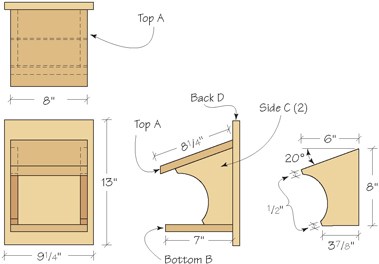AMERICAN ROBIN nesting shelf
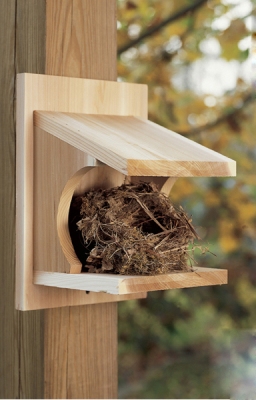
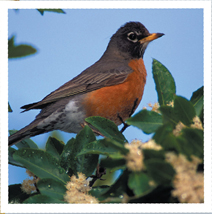
Because robins build exposed nest cups that rest in the forks of branches, they prefer an open-sided nest box like this one. Robins aren't shy about nesting near humans, so you can attach the nest box to your house near a window and watch their lives unfold up close. Attaching a robin's nest box to your house also helps protect the robins from such predators as crows, who tend to stay away from buildings.
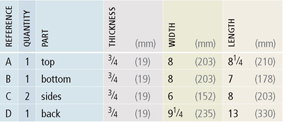
AMERICAN ROBIN
Although the appearance of the American robin is considered an indicator of spring, they actually spend the winter in much of their breeding range. However, because they spend more time in flocks in the winter and less time in backyards, you are less likely to see them until spring.
The American robin is 9″ to 11″ tall with a gray back and wings and brick-red underparts. They are a familiar sight pulling up worms on suburban lawns, but fruit is a substantial part of their main diet. American robins prefer to live in forests and in urban and suburban areas. They are found across the United States and Canada in the summer, but spend the winter south into Mexico. The American robin is the most widespread thrush in North America due to its tolerance of human-modified habitats.
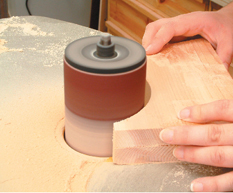
Cut out the parts according to the cutting list. Then lay out the radius cut on the sides. Use a band saw, coping saw or jigsaw to make the radius cut. Sand it smooth using an oscillating sander as shown. If you don't have a sander, use some 150-grit sandpaper wrapped around a cutoff from a broom stick or a fine rasp.
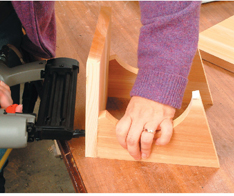
Using exterior glue and nails, attach the sides to the bottom.
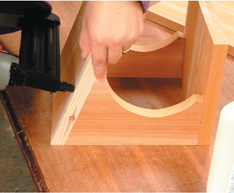
Using glue and nails, attach the top to the sides.
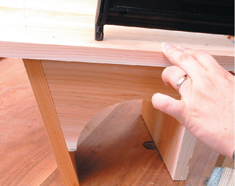
Lay the sides/bottom/top assembly on its face and attach the back with glue and nails. It's not necessary to finish this nesting shelf because it's made of cedar.
